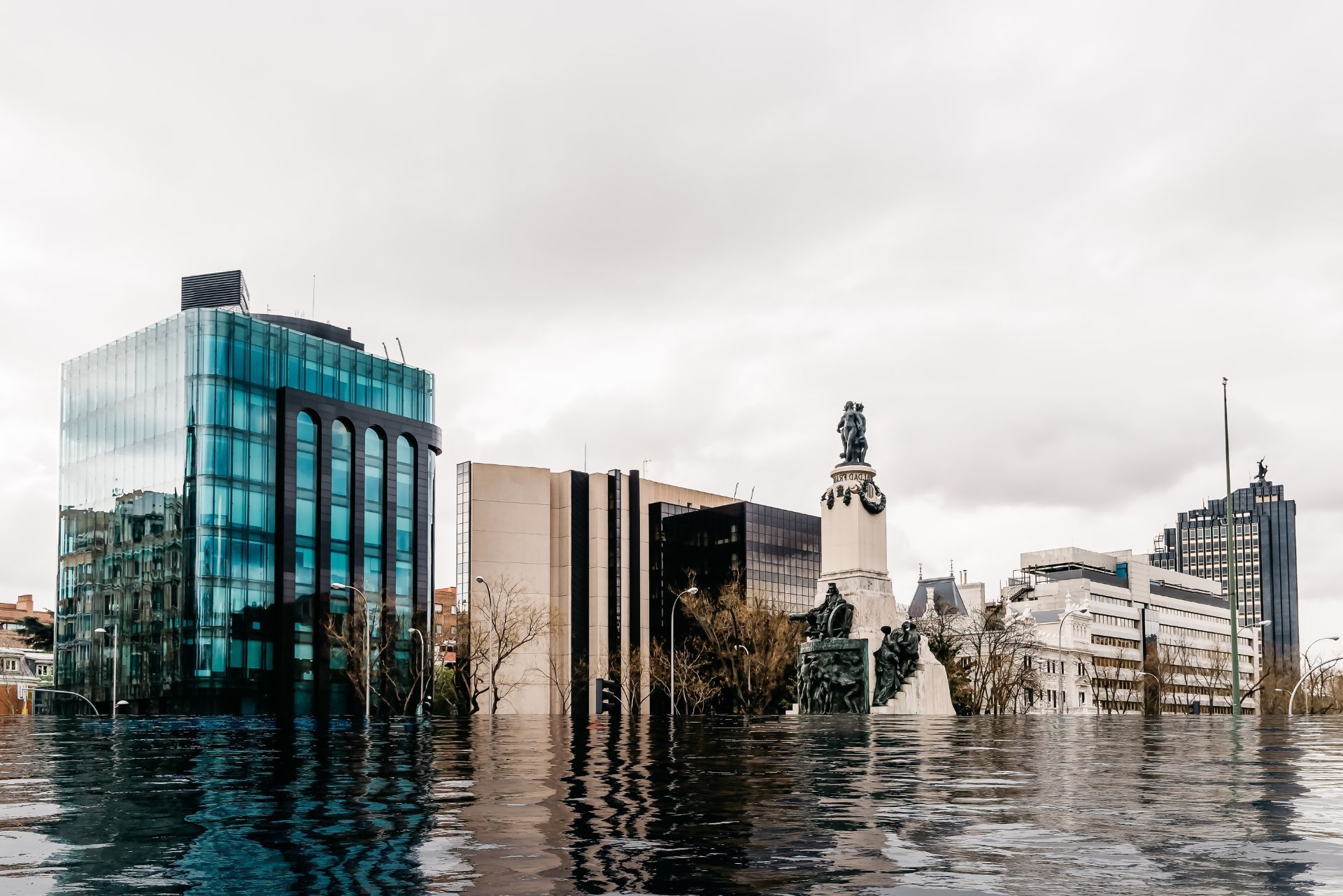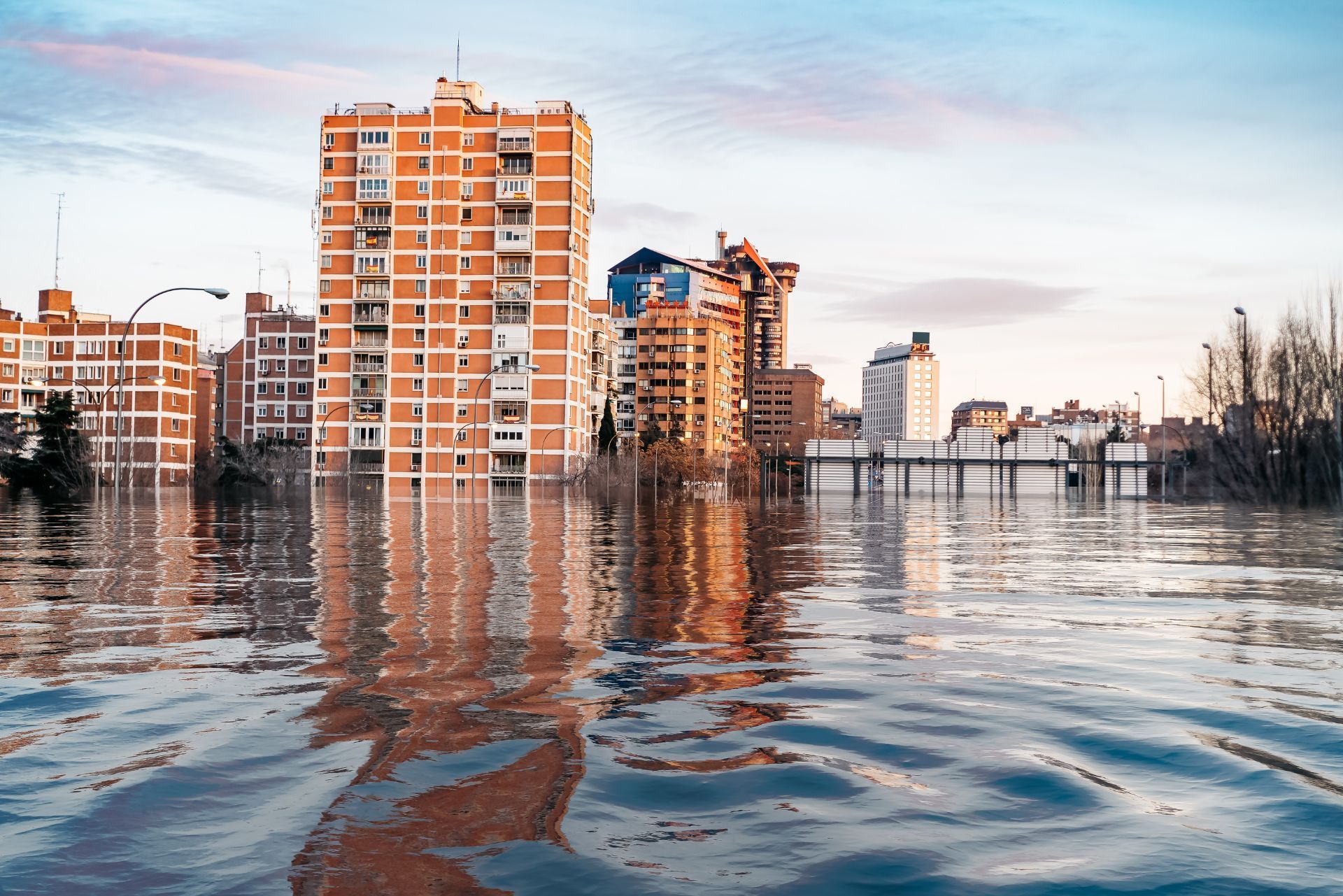Top 3 Recommended Policies

Flooding can be a devastating event for any business, and Colorado is no stranger to this natural disaster. Understanding the ins and outs of commercial flood insurance is crucial for business owners looking to protect their investments. This article will guide you through everything you need to know about commercial flood insurance in Colorado, from the basics to the specifics of coverage options.
Understanding Flood Risks in Colorado
Colorado's diverse geography makes it susceptible to various types of flooding. From mountain runoff to heavy rainstorms, the risk of flooding can vary significantly depending on the location and time of year. Understanding these risks is the first step in protecting your business.
The Geography of Flooding
In Colorado, flooding can occur in urban areas due to rapid rainfall, or in rural areas due to snowmelt. The mountainous regions can experience flash floods, which can be particularly dangerous. It’s essential for business owners to be aware of their specific location's flood zone designation, as this can impact insurance requirements and rates. Additionally, the interplay of rivers, lakes, and streams can exacerbate flooding risks, especially in areas where development has altered natural water flow. Businesses located near these bodies of water should consider implementing flood mitigation strategies, such as barriers or drainage systems, to minimize potential damage.
Historical Flood Events
Colorado has experienced several significant flooding events in recent history. The 2013 floods, for instance, caused widespread damage across the state, leading to millions in losses for businesses. These floods were particularly devastating due to the combination of heavy rainfall and saturated ground from previous storms, demonstrating how quickly conditions can change. Understanding past events can help business owners assess their risk and the importance of adequate insurance coverage. Moreover, the aftermath of such events often leads to increased regulatory scrutiny and changes in local zoning laws, which can further impact business operations. Staying informed about these changes is crucial for long-term planning and risk management.
Furthermore, the impact of climate change is increasingly relevant to
flood risks in Colorado. As weather patterns shift, the frequency and intensity of storms may increase, leading to more unpredictable flooding scenarios. Business owners should consider not only the historical data but also the potential future trends when evaluating their flood preparedness. Engaging with local emergency management agencies can provide valuable insights into upcoming initiatives aimed at flood prevention and response, enabling businesses to align their strategies with community efforts for greater resilience.

What is Commercial Flood Insurance?
Commercial flood insurance is a specialized policy designed to cover losses related to flooding. Unlike standard property insurance, which typically excludes flood damage, commercial flood insurance provides coverage for physical damage to buildings and contents caused by floodwaters. This type of insurance is particularly important for businesses that operate in regions susceptible to heavy rainfall, storm surges, or even melting snow, all of which can lead to unexpected flooding events.
Key Features of Commercial Flood Insurance
Commercial flood insurance policies can vary, but they generally include coverage for the building itself, business personal property, and, in some cases, additional living expenses if the business must temporarily close. It's crucial to understand what is covered and what is not to avoid surprises when filing a claim. For instance, many policies may also offer coverage for loss of income due to business interruption caused by flooding, which can be a significant financial relief for business owners. Additionally, some policies may include provisions for debris removal and the cost of restoring the property to its pre-flood condition, ensuring that businesses can recover more swiftly after a disaster.
Who Needs Commercial Flood Insurance?
Any business located in a flood-prone area should consider obtaining commercial flood insurance. Even if a business is not located in a designated flood zone, it is still vulnerable to flooding, making this insurance a wise investment. Additionally, some lenders may require flood insurance for commercial properties as a condition of financing. Businesses that operate in low-lying areas, near rivers, or coastal regions are particularly at risk, but even those in urban environments can face flooding due to heavy rainfall overwhelming drainage systems. Furthermore, the increasing unpredictability of weather patterns due to climate change means that even historically safe areas may experience flooding, making it essential for all business owners to assess their risk and consider flood insurance as part of their overall risk management strategy.
Types of Coverage Available
When exploring commercial flood insurance, it’s essential to understand the different types of coverage available. Policies can be tailored to fit the specific needs of a business, ensuring adequate protection against flooding. Flood insurance is not just a safety net; it is a critical component of a business's risk management strategy, especially for those located in flood-prone areas. Understanding the nuances of each coverage type can empower business owners to make informed decisions that safeguard their investments.
Building Coverage
This type of coverage protects the physical structure of the business, including the foundation, walls, and roof. It typically covers the cost of repairs or rebuilding if the property is damaged by floodwaters. Business owners should ensure that their building coverage is sufficient to cover the full replacement cost of their property. Additionally, it’s wise to review the policy periodically, especially after renovations or expansions, to ensure that the coverage reflects the current value of the building. Some policies may also include provisions for code upgrades, which can be crucial if local building codes have changed since the original construction.
Contents Coverage
Contents coverage protects the business's personal property, including furniture, inventory, and equipment. This is particularly important for businesses that rely heavily on their physical assets. It’s advisable to conduct a thorough inventory of all business contents to determine the appropriate level of coverage needed. Furthermore, businesses should consider the potential impact of flooding on specialized equipment, which may require additional endorsements or riders for full protection. For instance, restaurants may need to account for the cost of food spoilage, while retailers might need to consider the loss of seasonal inventory.
Additional Coverage Options
Some policies may offer additional coverage options, such as business interruption insurance, which can help cover lost income during the time the business is closed for repairs. Other options may include coverage for outdoor property, such as signs or landscaping, that could be damaged in a flood. Additionally, some insurers provide specialized coverage for electronic data and records, which can be invaluable for businesses that rely on digital information. This can help mitigate the risk of losing critical operational data in the event of a flood, ensuring that the business can resume normal operations as quickly as possible. Moreover, businesses should explore the possibility of obtaining flood mitigation assistance, which may offer resources for elevating structures or implementing other preventive measures to reduce future flood risk.
How to Obtain Commercial Flood Insurance
Obtaining commercial flood insurance involves several steps, from assessing risk to selecting the right policy. Business owners should take a proactive approach to securing coverage.
Assessing Your Risk
The first step in obtaining flood insurance is to assess the flood risk of your business location. This can be done by reviewing FEMA flood maps, which indicate flood zones and risk levels. Understanding your risk will help you determine the appropriate coverage and premium costs. Additionally, consider local historical data regarding flooding events, as this can provide further context to your risk assessment. Engaging with local government resources or community organizations can also yield valuable insights into specific vulnerabilities your business may face based on geographical and environmental factors.
Finding a Qualified Agent
Working with a qualified insurance agent who specializes in commercial flood insurance can be invaluable. They can help navigate the complexities of different policies, coverage options, and claims processes. A knowledgeable agent will also be able to provide insights into the best practices for mitigating flood risks. It's beneficial to seek out agents who have experience with businesses similar to yours, as they will understand the unique challenges and needs you may encounter. Don't hesitate to ask for references or testimonials from other business owners who have successfully navigated the insurance process with their assistance.
Comparing Policies
Once you have assessed your risk and found an agent, it’s time to compare different policies. Look for policies that offer the best coverage for your specific needs, and don’t hesitate to ask questions about any terms or conditions that are unclear. Comparing quotes from multiple providers can also help ensure you get the best rate. When evaluating policies, pay close attention to the exclusions and limitations that may apply, as these can significantly affect your coverage in the event of a flood. Additionally, consider the claims process outlined in each policy; a straightforward and efficient claims process can save you time and stress when you need it most. It's also wise to inquire about any additional endorsements or riders that can enhance your coverage, such as business interruption insurance, which can help cover lost income during the recovery period following a flood event.

The Cost of Commercial Flood Insurance
The cost of commercial flood insurance can vary significantly based on several factors, including the location of the business, the level of coverage, and the property's flood zone designation. Understanding these factors can help business owners budget for this essential insurance.
Factors Influencing Premiums
Several factors influence the premiums for commercial flood insurance. These include the property's elevation, proximity to water bodies, and the history of flooding in the area. Properties in higher-risk flood zones typically face higher premiums, while those in lower-risk areas may benefit from lower rates. Additionally, the type of business and its operations can also play a role; for instance, businesses that store hazardous materials may face higher premiums due to the increased risk of environmental damage during a flood. Furthermore, the age and condition of the building, as well as any flood mitigation measures that have been implemented, can also affect the overall cost of insurance.
Deductibles and Coverage Limits
In addition to premiums, it's essential to consider deductibles and coverage limits when evaluating flood insurance policies. Higher deductibles can lower premium costs but may result in higher out-of-pocket expenses in the event of a claim. Understanding these elements can help businesses find a balance between affordability and adequate coverage. It's also crucial to note that many commercial flood insurance policies have specific limits on coverage for contents, which can vary based on the type of business. For example, a restaurant may need to ensure that its equipment and inventory are fully covered, while a retail store might focus on merchandise. Business owners should carefully assess their unique needs and consult with insurance professionals to tailor their policies accordingly, ensuring they are adequately protected against potential flood-related losses.
Filing a Flood Insurance Claim
In the unfortunate event of a flood, knowing how to file a claim is crucial for recovering losses. The claims process can be complex, but being prepared can streamline the experience. Understanding the nuances of your policy and the specific requirements of your insurance provider can make a significant difference in how quickly and effectively you receive compensation for your losses.
Documenting Damage
After a flood, the first step in filing a claim is to document the damage. Take photographs and videos of the affected areas, and make a list of damaged items. This documentation will be essential when submitting your claim to the insurance company. Be thorough in your documentation; include close-up shots of damaged items as well as wide-angle views of the overall damage to your property. Additionally, consider keeping receipts for any emergency repairs or temporary accommodations, as these may also be reimbursable under your policy.
Contacting Your Insurance Provider
Once the damage is documented, contact your insurance provider as soon as possible to report the claim. Provide them with all necessary information, including your policy number and details about the damage. The sooner you report the claim, the sooner the claims process can begin. Be prepared for a series of questions from your insurer, as they will need to gather specific details to assess your claim accurately. It can be beneficial to have all your documentation organized and ready to share during this initial conversation to avoid any delays.
Working with Adjusters
After filing a claim, an insurance adjuster will likely be assigned to assess the damage. It’s important to cooperate fully with the adjuster and provide any additional information they may request. This assessment will play a crucial role in determining the amount of compensation you will receive. During the adjuster's visit, take the opportunity to ask questions about the claims process and what to expect moving forward. Understanding how the adjuster evaluates damages can also help you prepare for any potential disputes regarding the valuation of your losses. Furthermore, remember that you have the right to dispute the adjuster's findings if you believe they do not accurately reflect the extent of the damage, so keep detailed records of all communications and findings throughout this process.
Mitigating Flood Risks
While commercial flood insurance is essential, it’s equally important to take proactive steps to mitigate flood risks. Implementing flood mitigation strategies can help protect your business and potentially lower insurance premiums.
Flood-Proofing Your Property
Investing in flood-proofing measures can significantly reduce the risk of flood damage. This may include elevating electrical systems, installing sump pumps, and using flood-resistant materials in construction. Each of these measures can help minimize the impact of flooding on your property.
Creating an Emergency Plan
Having a well-thought-out emergency plan can make a significant difference in how a business responds to flooding. This plan should include evacuation routes, communication strategies, and procedures for safeguarding important documents and equipment. Regularly reviewing and updating the plan can ensure that all employees are prepared in the event of a flood.
Conclusion
Understanding Colorado commercial flood insurance is vital for business owners looking to safeguard their investments against the risks of flooding. By assessing flood risks, obtaining the right coverage, and implementing mitigation strategies, businesses can protect themselves from potential losses. With the right preparation and knowledge, navigating the complexities of commercial flood insurance can be a manageable and worthwhile endeavor.
As flooding continues to pose a threat to businesses across Colorado, staying informed and proactive is essential. Whether you are a new business owner or have been operating for years, ensuring that you have adequate flood insurance can provide peace of mind and financial security in uncertain times.
Contact Us
Phone
Location

